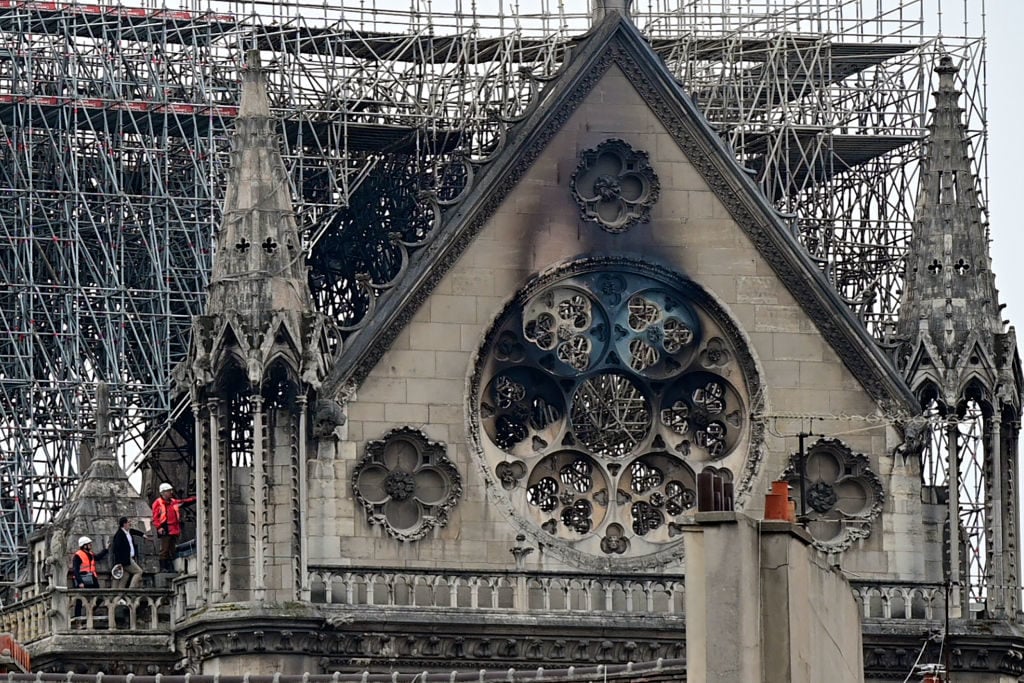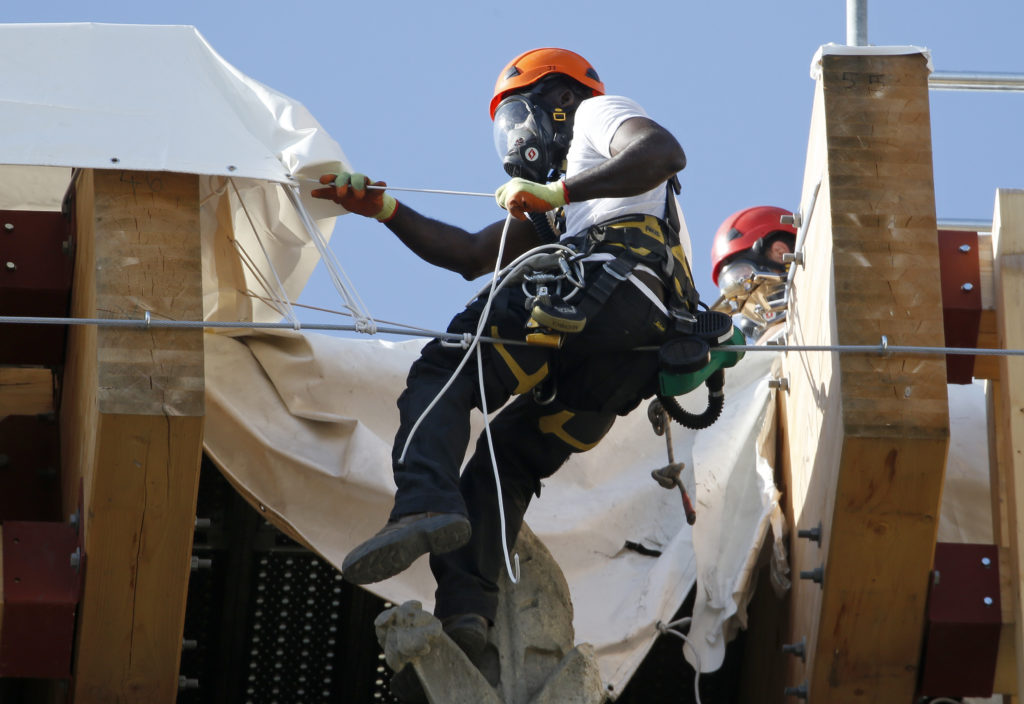Art World
The Notre Dame Fire Spread Lead Contaminants Around Paris. Now, French Authorities Are Accused of Failing to Act
Government agencies didn't begin testing lead contamination levels at nearby schools until a month after the fire.

Government agencies didn't begin testing lead contamination levels at nearby schools until a month after the fire.

Sarah Cascone

Five months after the fire at Notre Dame, toxic lead particles released from the cathedral are threatening public health—a risk French authorities continue to downplay. The devastating April 15 blaze raged unchecked for half an hour before the fire department was called, leading to the collapse of the cathedral’s ceiling and spire, which was clad in 460 tons of lead tiles.
Now, confidential documents seen by the New York Times show that the authorities knew within 48 hours of the fire that lead pollution could pose a serious problem. The paper’s investigation describes “a failed official response” that has put public health at risk, prioritizing instead the reconstruction of the historic building on the Île de la Cité.
“The state was afraid to make people afraid,” Anne Souyris, the city’s deputy mayor in charge of health, told the Times. “They thought that they would protect people by not communicating about the lead issue.”
National and regional agencies delayed issuing warnings and didn’t begin testing lead contamination levels at nearby schools until a month after the fire. A full decontamination of the neighborhood of the cathedral site wasn’t completed for four months. A nearby daycare at a police station was shut down in the aftermath of the fire, but other schools and daycare centers in the area remained open.

A worker stands next to asphalt waste materials as he takes part in a clean-up operation at Saint Benoit school near Notre-Dame cathedral in Paris. Photo by Martin Bureau/AFP/Getty Images.
More than 6,000 children under age six live a half-mile or less from areas that have tested positively for unsafe lead levels, but the government has not called for mandatory testing of children. Ingesting lead can cause serious cognitive damage to young children and interfere with the development of the nervous system.
“What happens with lead over centuries and centuries is that the surface converts basically to lead white paint, lead hydroxide, and lead carbonate,” said George Wheeler, a research scholar at New York’s Metropolitan Museum of Art, during a presentation last week from the International Foundation for Art Research, or IFAR, in New York. “That material got flaked off in the fire into very tiny particles that have covered virtually every surface—it’s the same problem that we have with lead paint in buildings in Brooklyn.”
Contamination of nearby parks remains the biggest risk, as lead levels are 60 times over the level that is considered safe. Tests results of some nearby schools also show lead levels that are alarmingly high, although the authorities insist they are safe for children.

French Culture Minister Franck Riester (R) speaks with French chief architect of historical sites Philippe Villeneuve (L) as they visit Notre Dame during preliminary work. Photo by Stephan de Sakutin/AFP/Getty Images.
“This is a great concern in the schools in the Île de la Cité and the neighborhood around it because the dust has spread,” said art history professor Michael T. Davis, the chair of architectural studies at Mount Holyoke College, during the talk in New York.
At even greater risk are the laborers restoring and rebuilding the site. Despite lead levels of up to 2,300 times the regulatory threshold, restorers and cleaning crews were not initially given lead exposure training. They set to work without masks, gloves, or other safety gear, not taking the necessary measures to protect themselves from the toxins. In July, authorities halted work. At the same time, an environmental protection group filed a lawsuit against Paris authorities for failing to issue sufficient warnings about the lead contaminants.

Professional mountain climbers wearing masks work on a part of Notre Dame cathedral following the massive fire, on September 6, 2019 in Paris. Photo by Chesnot/Getty Images.
Beyond the risk to themselves, workers who don’t decontaminate their bodies and clothing after leaving the site run the risk of spreading lead dust to their homes and families. So far, three workers have been shown to have unsafe lead levels in their blood.
“Eventually the core emergency teams had to resume work because there were still structural problems,” said Lindsay S. Cook, a visiting art professor at Poughkeepsie’s Vassar College, at the talk. “My colleagues who have gone into the building are wearing Tyvek suits and respirators. They take showers when they come out of the building—that wasn’t happenings the first few weeks after the fire.”